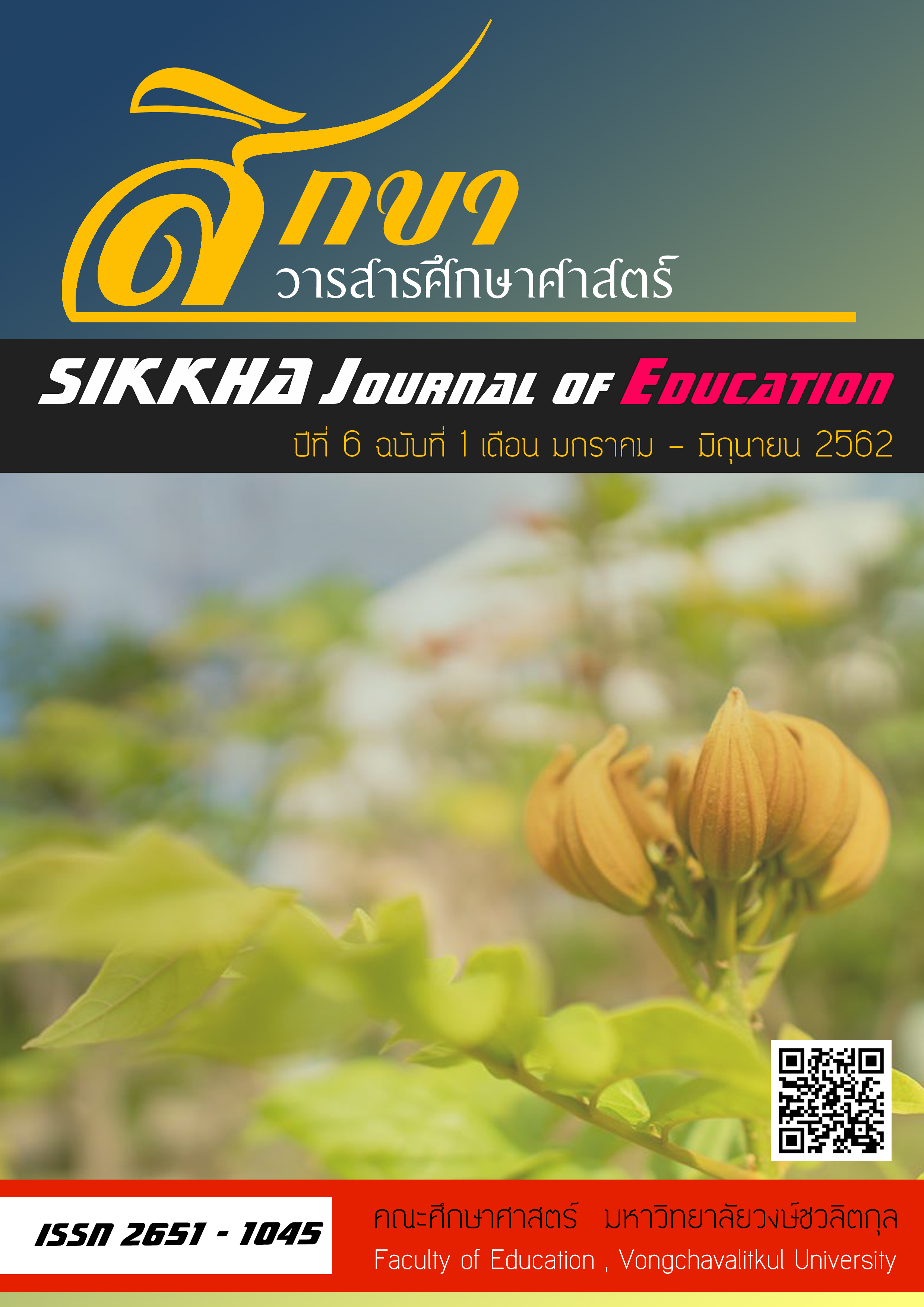The Effect of Providing Students with On-Board-Content Note on Their Learning Mathematics
A Study of First Year Pre-Service Science Teachers in the Faculty of Education, National University of Laos
คำสำคัญ:
On-Board-Content Note, Note-Taking Effort, Class Interactionบทคัดย่อ
Mathematics is one of the subjects that is taught conventionally with lecture style and note-taking
is an essential strategy for learning. A Mathematics class also involves the process of reasoning and
problem-solving which requires more time for discussion. By this reason, students should be allowed to
reflect and interact with what is being taught simultaneously with transcribing notes. However, in cases
where students have poor note-taking ability, it is proposed that the said students be provided with
on-board-content note. Hence, this experimental study was conducted to examine its effects on
students’ learning outcomes in three dimensions: class attendance, class interaction and exam
performance. The study found that the class that was provided with the on-board-content note
demonstrates more amount of class interaction, while the class attendance and exam performance were
not significantly affected.
เอกสารอ้างอิง
Barton, B., Ell, F., Kensington-Miller, B. & Thomas, M. (2012). Mathematics undergraduate teaching: Perspective and interaction. Teaching & Learning Research Initiative. Retrieved from https://www.tlri.org.nz/sites/default/files/projects/9285_Summary.pdf
Boch, F. &Piolat, A. (2005). Note-taking and learning: A summary of research. The WAC Journal, 16
Cardetti, F., Khamsemanan, N. &Orgnero, M.C. (2010).Insights regarding the usefulness of partial notes in mathematics course. Journal of the Scholarship of Teaching and Learning, 10(3)
Cornelius, T.L. & Owen-DeSchryver, J. (2008).Differential effects of full and partial notes on learning outcomes and attendance. Teaching of Psychology, 35: 6-12
DeWitt, S. (2007).The effect of note-taking and mental rehearsal on memory. Journal of Undergraduate Psychological Research, 2
DeZure, D., Khaplan, M. &Deerman, M.A. (2001). Research on students’ note-taking: Implication for Faculty and graduate student instructor. CRLT Occasional Paper No.16
Friedman, M.C. (n.d.). Notes on Note-Taking: Review of Research and Insights for Students and Instructors. Cambridge, Massachusetts: Harvard University. Retrieved from hilt.harvard.edu/files/hilt/files/notetaking_0.pdf
Hayati, A.M., &Jalilifar, A. (2009).The impact of note-taking strategies on listening comprehension of EFL learners. English Language Teaching, 2(1)
Kiewra, K.A., DuBois, N., Christian, D., McShane, A., Meyerhoffer, M., &Roskelley, D. (1991).Note-taking functions and techniques. Journal of Educational Psychology, 83(2), 240-45
Potts, B. (1993). Improving the quality of student notes.ERIC/AE Digest. Washington, DC: ERIC Clearinghouse on Assessment and Evaluation. (ED 366645)
Quintus, L., Borr, M., Duffield, S., Napoleon, L. & Welch, A. (2012).The impact of the Cornell note-taking method on students’ performance in a High School Family and Consumer Science Class. Journal of Family & Consumer Science Education, 30(1)
The Learning Centre, The University of New South Wales (2010). Note-Taking Skills: An Introduction. Retrieved November 21, 2015, from https://webapp.ln.edu.hk/ceal/elss/sites/default/files/online_resources/Note%20Taking%20Skills.pdf



